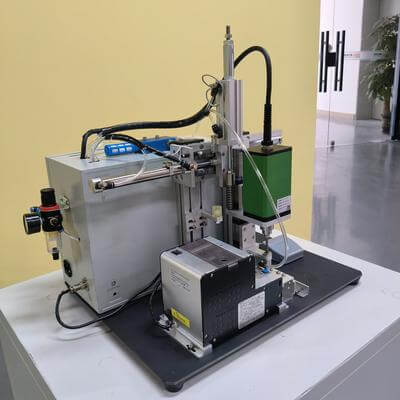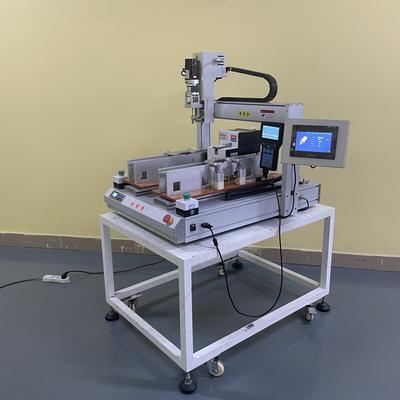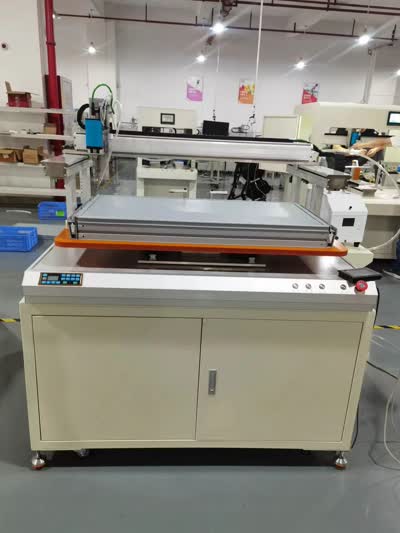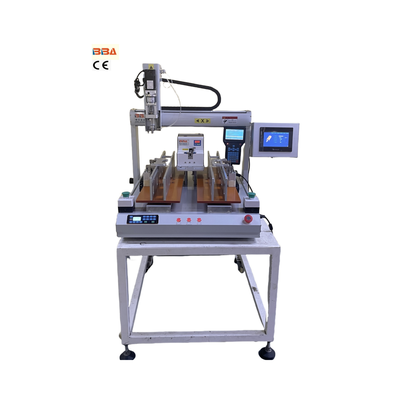Energy Efficient Screw Locking Equipment | Industrial Automation Tools
| Product Name | Applicable industries |
| Desktop Screwdriver Robot | Industrial Control Panel Assembly |

Energy Efficiency in Screw Locking Equipment
In today's competitive industrial landscape, optimizing energy consumption is not just an environmental concern but a critical factor in operational efficiency and cost management. Screw locking equipment, a cornerstone of assembly lines across various sectors, presents a significant opportunity for energy savings. Modern advancements in this technology are transforming these essential tools into models of efficiency, reducing their carbon footprint while enhancing performance and reliability.
The Critical Role of Energy-Optimized Design
Traditional screw locking tools often operated with simple on/off mechanisms, consuming power consistently regardless of the actual torque demand. The latest generation of equipment, however, incorporates sophisticated energy-optimized designs. At the heart of this evolution are high-efficiency electric motors. These motors are engineered to draw power proportional to the required torque, significantly reducing energy waste during both the tightening process and idle periods. This precise power management ensures that energy is used only when and where it is truly needed.
Furthermore, the integration of permanent magnet technology in motors has dramatically improved the conversion of electrical energy into mechanical torque. This results in less energy lost as heat and more directed toward the actual work of fastening. When multiplied across hundreds or thousands of fastening points on a production line, the cumulative energy savings become substantial, directly lowering electricity costs and reducing the strain on a facility's power infrastructure.
Smart Technology and Adaptive Control Systems
Energy efficiency is no longer just about hardware; it is increasingly driven by intelligence. Modern screw locking systems are equipped with advanced adaptive control systems that function as an energy-saving brain. These systems continuously monitor and analyze key parameters such as joint stiffness, thread condition, and material properties in real-time. Based on this analysis, the equipment dynamically adjusts its torque output and rotational speed to apply the exact amount of energy needed for a perfect joint—no more, no less.
This adaptive approach eliminates the over-tightening that was common with older systems, a major source of wasted energy and potential product damage. By ensuring right-first-time results, these smart systems also drastically reduce the energy consumed by rework and repair cycles, contributing to a more efficient and sustainable production process overall.
Contributing to a Sustainable Manufacturing Ecosystem
The pursuit of energy efficiency in screw locking equipment aligns with broader corporate sustainability goals. Lower energy consumption directly translates to a reduced greenhouse gas footprint, especially in regions where electricity generation is carbon-intensive. This allows manufacturers to demonstrate tangible progress in their environmental commitments.
The benefits extend beyond environmental stewardship. Reduced energy consumption leads to lower operating costs, improving the bottom line. Additionally, energy-efficient equipment tends to generate less heat, which contributes to a more comfortable workplace and can reduce the load on facility cooling systems, creating a secondary layer of energy savings. The reliability inherent in these modern systems also minimizes downtime, ensuring that production lines run smoothly and efficiently, further optimizing resource use.
In conclusion, energy efficiency in screw locking equipment is a powerful trend driven by innovation in motor design, intelligent control systems, and a holistic view of manufacturing costs. Investing in such technology is a strategic decision that pays dividends through reduced operational expenses, enhanced sustainability credentials, and improved production reliability. As industry continues to prioritize efficiency, advanced screw locking solutions stand out as a key enabler of smarter, greener manufacturing.


